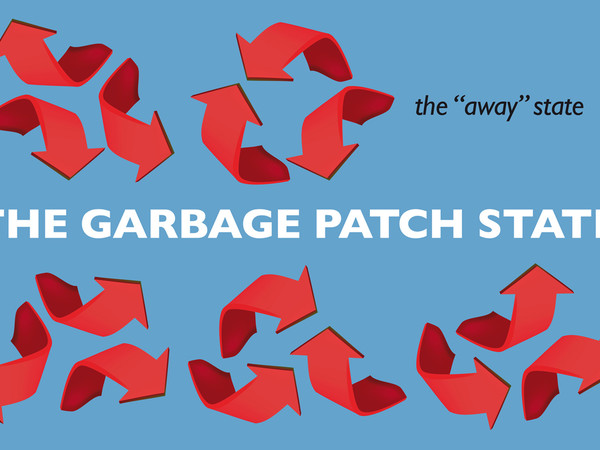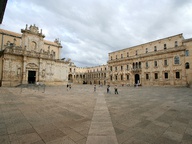Garbage Patch State. Maria Cristina Finucci, Wasteland

Garbage Patch State. Maria Cristina Finucci, Wasteland, Cà Foscari, Venezia
From 29 Maggio 2013 to 24 Novembre 2013
Venice
Place: Ca’ Foscari
Address: Dorsoduro
Telefono per informazioni: +39 041 2348368
E-Mail info: comunica@unive.it
Official site: http://www.thegarbagepatchstate.org
Charged with the intense power of Myth, a new State is being brought to Venice – one of the largest states in the world: the Garbage Patch State.
It cannot be found on any map (yet), satellite survey systems cannot define its exact borders, and its surface area, depending on the survey, covers about 16 million km². It remains inconspicuous, yet it is highly dangerous for the environment and, on the short term – as short as the food chain from fish to humans – for every one of us.
This is the GARBAGE PATCH STATE invented by Maria Cristina Finucci. It sums up in a simple image what is in fact a very complex phenomenon of islands made of garbage and floating in the middle of the oceans.
The idea is inscribed in the framework of Wasteland, a complex art project on which the artist has been working for several months, composed of videos, images, and many other interventions.
It started in Paris on April 11 of this year: in the Year of Water, the new Federal State was institutionally – albeit symbolically – recognized during a performance-installation at the UNESCO headquarters.
The Garbage Patch State has its own Constitution, as well as a national flag: a background as blue and transparent as the sea, filled with red swirls – like the gyres in the Pacific ocean (but also in the Sargasso Sea of the Atlantic), carrying and gathering the debris from the rivers and ships.
The Garbage Patch State will be one of the many other states represented at the Venice Art Biennale from June to November. It will be hosted by Università Ca’ Foscari Venezia, in its historical building on the Canal Grande. This choice of venue is hardly surprising, considering that the Venetian university has not only organized a number of prestigious exhibitions, but is also a reference point among Italian universities in matters of environmental policies, as testified by the GreenMetric ranking of sustainable universities elaborated by Universitas Indonesia.
To represent the new State in Venice, Maria Cristina Finucci specifically designed an installation: a pavilion composed of two cubes and a flood of colored plastic caps harnessed by red nets, pouring out of the pavilion in the direction of the Canal Grande; a metaphor and image of the overflow of plastic and debris in every sea and ocean of the planet. It also hints at the overwhelming growth of the Garbage Patch, with its energy based on plastic, taking the shape of a live animal, evil in spite of its alluring aspect. Inside the larger cube, the video “Dentro” will be projected at 360 degrees, giving the viewer the impression of being immersed in the “plastic soup”.
Sponsored by the Italian Ministry of the Environment, the work aims to raise awareness of a gigantic problem that is growing by the minute. While Finucci’s aim is not to demonize plastic (a material which by now has become irreplaceable), it still aims to encourage reflection on the criminal use we make of it, as opposed to its usually unacknowledged importance.
It cannot be found on any map (yet), satellite survey systems cannot define its exact borders, and its surface area, depending on the survey, covers about 16 million km². It remains inconspicuous, yet it is highly dangerous for the environment and, on the short term – as short as the food chain from fish to humans – for every one of us.
This is the GARBAGE PATCH STATE invented by Maria Cristina Finucci. It sums up in a simple image what is in fact a very complex phenomenon of islands made of garbage and floating in the middle of the oceans.
The idea is inscribed in the framework of Wasteland, a complex art project on which the artist has been working for several months, composed of videos, images, and many other interventions.
It started in Paris on April 11 of this year: in the Year of Water, the new Federal State was institutionally – albeit symbolically – recognized during a performance-installation at the UNESCO headquarters.
The Garbage Patch State has its own Constitution, as well as a national flag: a background as blue and transparent as the sea, filled with red swirls – like the gyres in the Pacific ocean (but also in the Sargasso Sea of the Atlantic), carrying and gathering the debris from the rivers and ships.
The Garbage Patch State will be one of the many other states represented at the Venice Art Biennale from June to November. It will be hosted by Università Ca’ Foscari Venezia, in its historical building on the Canal Grande. This choice of venue is hardly surprising, considering that the Venetian university has not only organized a number of prestigious exhibitions, but is also a reference point among Italian universities in matters of environmental policies, as testified by the GreenMetric ranking of sustainable universities elaborated by Universitas Indonesia.
To represent the new State in Venice, Maria Cristina Finucci specifically designed an installation: a pavilion composed of two cubes and a flood of colored plastic caps harnessed by red nets, pouring out of the pavilion in the direction of the Canal Grande; a metaphor and image of the overflow of plastic and debris in every sea and ocean of the planet. It also hints at the overwhelming growth of the Garbage Patch, with its energy based on plastic, taking the shape of a live animal, evil in spite of its alluring aspect. Inside the larger cube, the video “Dentro” will be projected at 360 degrees, giving the viewer the impression of being immersed in the “plastic soup”.
Sponsored by the Italian Ministry of the Environment, the work aims to raise awareness of a gigantic problem that is growing by the minute. While Finucci’s aim is not to demonize plastic (a material which by now has become irreplaceable), it still aims to encourage reflection on the criminal use we make of it, as opposed to its usually unacknowledged importance.
SCARICA IL COMUNICATO IN PDF
COMMENTI

-
 Dal 31 gennaio 2024 al 04 maggio 2025
Fermo | Palazzo dei Priori
Dal 31 gennaio 2024 al 04 maggio 2025
Fermo | Palazzo dei Priori
-
 Dal 20 dicembre 2024 al 04 maggio 2025
Fermo | Palazzo dei Priori
Dal 20 dicembre 2024 al 04 maggio 2025
Fermo | Palazzo dei Priori
-
 Dal 20 dicembre 2024 al 04 maggio 2024
Gorizia | Palazzo Attems Petzenstein
Dal 20 dicembre 2024 al 04 maggio 2024
Gorizia | Palazzo Attems Petzenstein
-
 Dal 18 dicembre 2024 al 18 dicembre 2024
Venezia | Museo Correr
Dal 18 dicembre 2024 al 18 dicembre 2024
Venezia | Museo Correr
-
 Dal 14 dicembre 2024 al 02 marzo 2025
Palermo | Palazzo Abatellis
Dal 14 dicembre 2024 al 02 marzo 2025
Palermo | Palazzo Abatellis
-
 Dal 12 dicembre 2024 al 23 febbraio 2025
Roma | Palazzo Altemps
Dal 12 dicembre 2024 al 23 febbraio 2025
Roma | Palazzo Altemps


